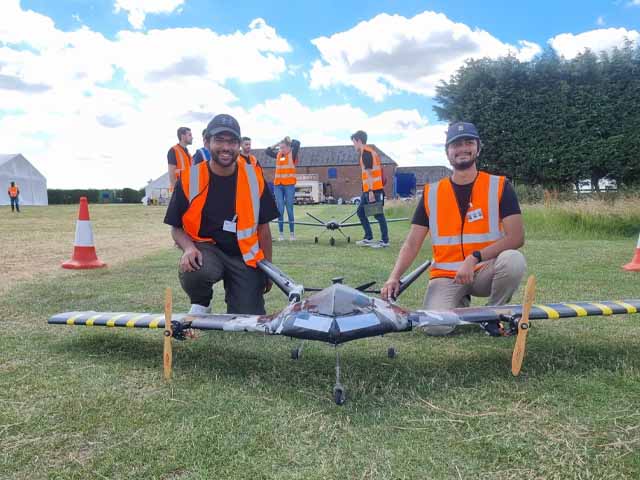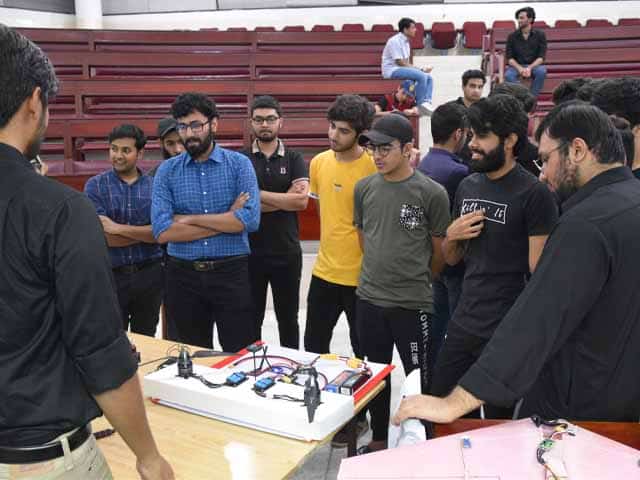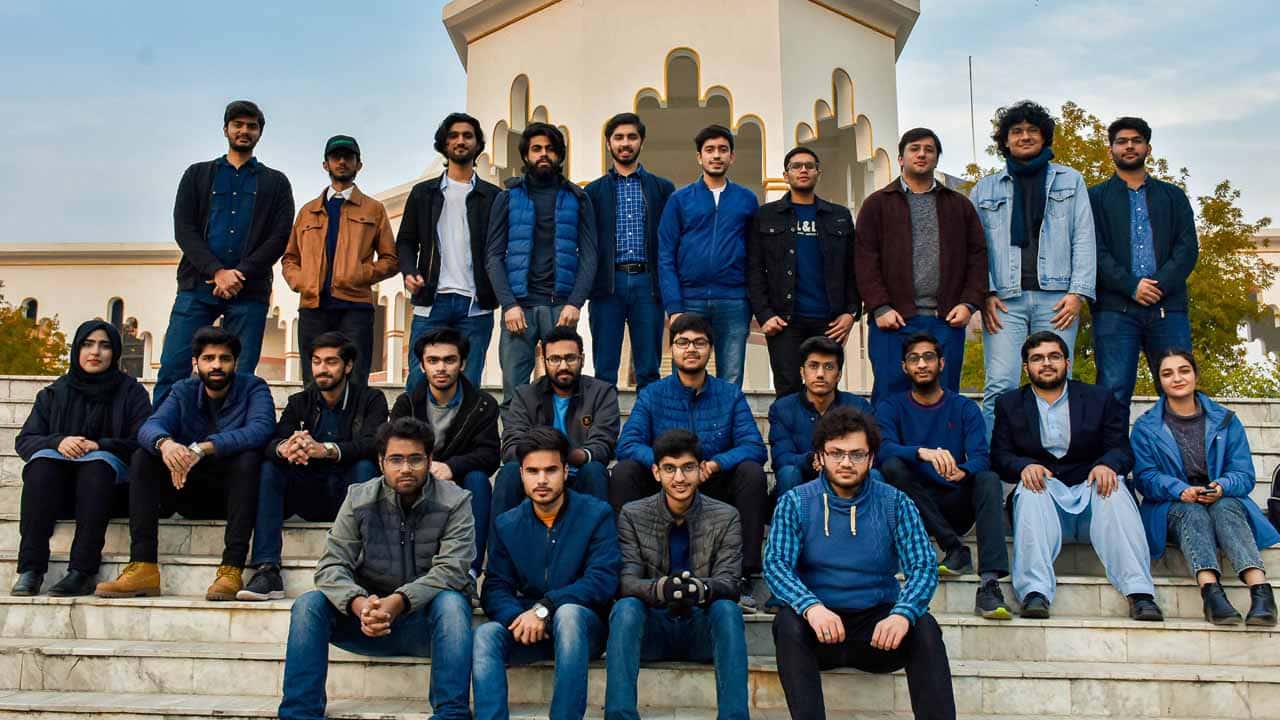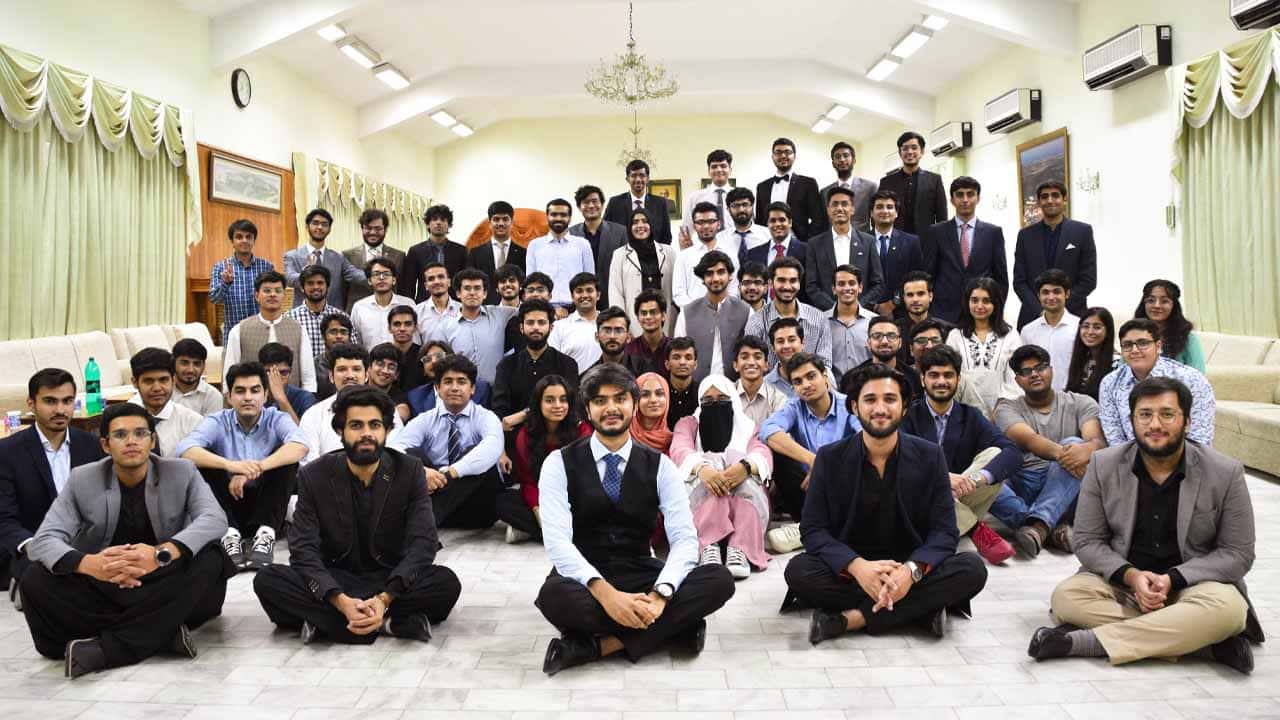Team Foxtrot comprises a group of undergraduate students comprise from various disciplines at Ghulam Ishaq Khan Institute of Engineering Sciences and Technology (GIKI) who share a common vision of developing high-quality Unmanned Aerial Vehicles (UAVs) and promoting aviation awareness across different regions of Pakistan. The Team’s journey began in 2018 when some like-minded individuals decided to take necessary steps to decrease the aviation knowledge gap that lies between Pakistan and the rest of the developed world.
Since its establishment, Team Foxtrot has been devoted to creating, designing, and building UAVs by dividing the team into several technical and non-technical sub-teams, including Automation, Imagery, Fabrication, Design, Documentation, Multimedia, and Media coverage. Each sub-team plays a crucial role in the success of the team.
- The Design team conceptualizes the challenge UAV as per the requirements and converts it into a CAD model for further analysis.
- The Automation team is responsible for managing all electronics, testing, and automation of the UAV.
- The Imagery team takes care of all AI-related software to enhance object detection and aerial mapping.
- The Fabrication team transforms the design into a tangible reality, while the Documentation team manages the paperwork and technical reports related to the challenge.
- The Multimedia and Media coverage teams work relentlessly to increase the team’s visibility and seek out suitable sponsors and partners.



Achievements:
Team Foxtrot has been competing in the IMechE UAS Challenge in the United Kingdom (UK) for the last 4 years and has already created its place amongst the top teams participating from around the globe. The team performed exceptionally and stood 1st in Asia, and 6th in the globe at the Live IMechE UAS Challenge 2022, as well as won the Business Proposition Award 2022 for the second consecutive time. The documentation team has been creating history in its own way by achieving a flawless score of 20/20 in both Preliminary Design Review (PDR) and Critical Design Review (CDR).

Furthermore, in 2019, its debut year, Team Foxtrot won the ‘Highest Placed New Entrant Award,’ and in 2021, the team finished fifth in the virtual event of the IMechE UAS Challenge, winning the ‘Business Proposition Award.’ Also, the team accomplished something previously thought to be impossible: a perfect score on Design Report #1.
Moreover, the team believes in the process of disseminating knowledge. It has arranged various STEM (Science, Technology, Engineering, and Mathematics) sessions – physical and online – throughout Pakistan. Its objective is to provide information regarding the field of engineering by engaging young students in innovative and informative activities. The team’s goal is to raise awareness about UAVs to improve Pakistan’s economy and encourage development by using them for agricultural spraying and aid relief missions during emergency situations like floods and earthquakes.
Last Year’s Challenger – Project Barq:
Last year’s project, Barq, was designed to complete all core tasks of the IMechE UAS Challenge 2022 besides the optional tasks of Endurance and Area Search. Project Barq is a fixed-wing design having a tri-motor configuration to enable short take-off and precision landing within a limited 10 x 10 m area. The aircraft uses a V-tail and glider wings to combat air resistance and has a styrofoam structure strengthened with carbon fibers for maximum strength-to-weight ratio, high maneuverability, and enhanced endurance.
Next Stop – The AUVSI SUAS Competition:
For the 2022-2023 tenure, the team has decided to participate in the SUAS Competition which is hosted by AUVSI in the US. The SUAS competition is designed to foster interest in Unmanned Aerial Systems (UAS), stimulate interest in UAS technologies, and engage students in a challenging mission.
The competition requires students to design, integrate, report on, and demonstrate a UAS capable of autonomous flight and navigation, remote sensing via onboard payload sensors, and execution of a specific set of tasks which include:
- Autonomous Flight. The UAS must take off, fly within boundaries, navigate a series of waypoints, and land.
- Obstacle Avoidance. The UAS must avoid other aircraft sharing the airspace through sense-detect-avoid.
- Object Detection, Classification, Localization. The UAS takes pictures of a search area, detects objects of interest, classifies its characteristics, and provides a GPS position.
- Air Delivery. The UAS autonomously drops a payload object so that it lands undamaged at a target GPS position.
The team has started working on its design and is looking to fly high once again.





